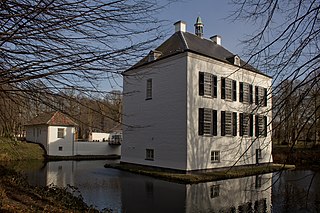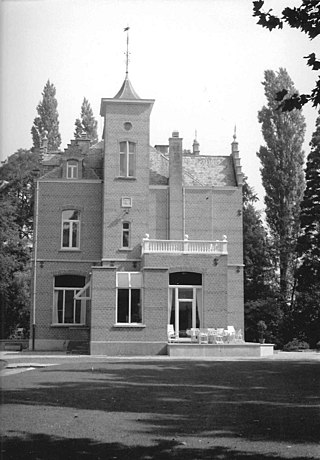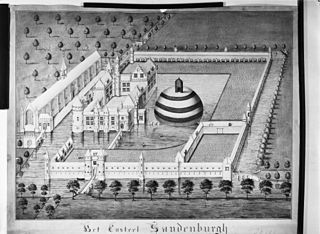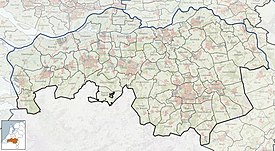
Tattershall Castle is a castle in Tattershall, Lincolnshire, England, about 12 miles (19 km) north east of Sleaford. Since 1925 it has been in the care of the National Trust.

Muiden Castle is a castle in the Netherlands, located at the mouth of the Vecht river, some 15 kilometers southeast of Amsterdam, in Muiden, where it flows into what used to be the Zuiderzee. It is one of the better known castles in the Netherlands and featured in many television shows set in the Middle Ages.

Queenborough Castle, also known as Sheppey Castle, is a 14th-century castle, the remnants of which are in the town of Queenborough on the Isle of Sheppey, Kent in England. The castle and the associated planned town were built on the orders of King Edward III from 1361 and named in honour his wife, Queen Philippa. It was the first concentric castle to be built in England, and the only royal castle to be new-built in England during the Late Middle Ages. Overlooking the Swale, then an important waterway approaching the River Medway, Queenborough Castle formed part of the country's coastal defences until 1650 when it was declared to be unfit for use and was almost completely demolished shortly afterwards. The site is now a public park and the only visible remains are some low earthworks.

Egmond Castle, also called the Ruins of Egmond, is a ruined medieval castle in the Dutch province of North Holland. It is located in Egmond aan den Hoef in the municipality of Bergen and lies about 7 kilometres (4.3 mi) west of Alkmaar. The castle dates from the 11th century and is the ancestral seat of the Egmond family, whose members became sovereign Dukes of Guelders, Counts of Egmond and Princes of Gavere, Counts of Buren and Leerdam. It is a national monument of the Netherlands.

Haamstede Castle is a castle in the village of Haamstede on the island of Schouwen-Duiveland. It is a rijksmonument.

Bokhoven Castle was a big defendable castle in Bokhoven, the Netherlands. A moat and part of the northern wall of the outer bailey are all that reminds of the castle.

Loon op Zand Castle, is a castle in Loon op Zand, in the Dutch province of North Brabant. The current building looks like a manor, but is actually the keep of a medieval castle.

Geldrop Castle is a castle with park near the center of Geldrop, North-Brabant, the Netherlands. It is on the edge of the valley of the Kleine Dommel.

Willem VI of Horne was a Dutch Nobleman, the Lord of Horne.

Oud Haerlem Castle was a very strong castle in Holland. In 1351 it was demolished after a long siege.

Polanen Castle was a castle located in today's Monster, South Holland in the Netherlands. The ancestral home of the Polanen family, it suffered a siege in 1351 and was demolished in 1394. It was replaced by a small manor somewhat to the south.

Heusden Castle is a historical site and castle in Heusden, Destelbergen, Belgium. The present structure was built in 1899 on the grounds of a former castle built in the 11th century. The above-ground parts of the old castle were demolished in the 18th century. The moat of the old castle still exists. In 1911, remains of what were probably dungeons were found, and parts of an older building near the moat were restored.

Te Riviere Castle is a ruinous castle located in Schiedam, Netherlands.

Spangen Castle was a medieval castle near the village Overschie. It has disappeared completely. The Rotterdam city quarter Spangen was named for the castle.

Zandenburg was a famous castle just south of Veere. Nothing remains of it, except some foundations below ground level.

Moermond Castle is a castle in Renesse on Schouwen-Duiveland.

Hellenburg is a ruined castle near Baarland, in Zeeland, Netherlands.

Windenburg was a rather typical small castle in Dreischor, the Netherlands.

Oostende Castle is a castle in Goes, the Netherlands. The current castle was part of a motte-and-bailey castle. Its grounds formed the outer bailey. The motte was directly south of it, now under the Maria Magdalena Church.

Zaamslag Castle was a Motte-and-bailey castle in Zeelandic Flanders, the motte remains. It is called Torenberg.























